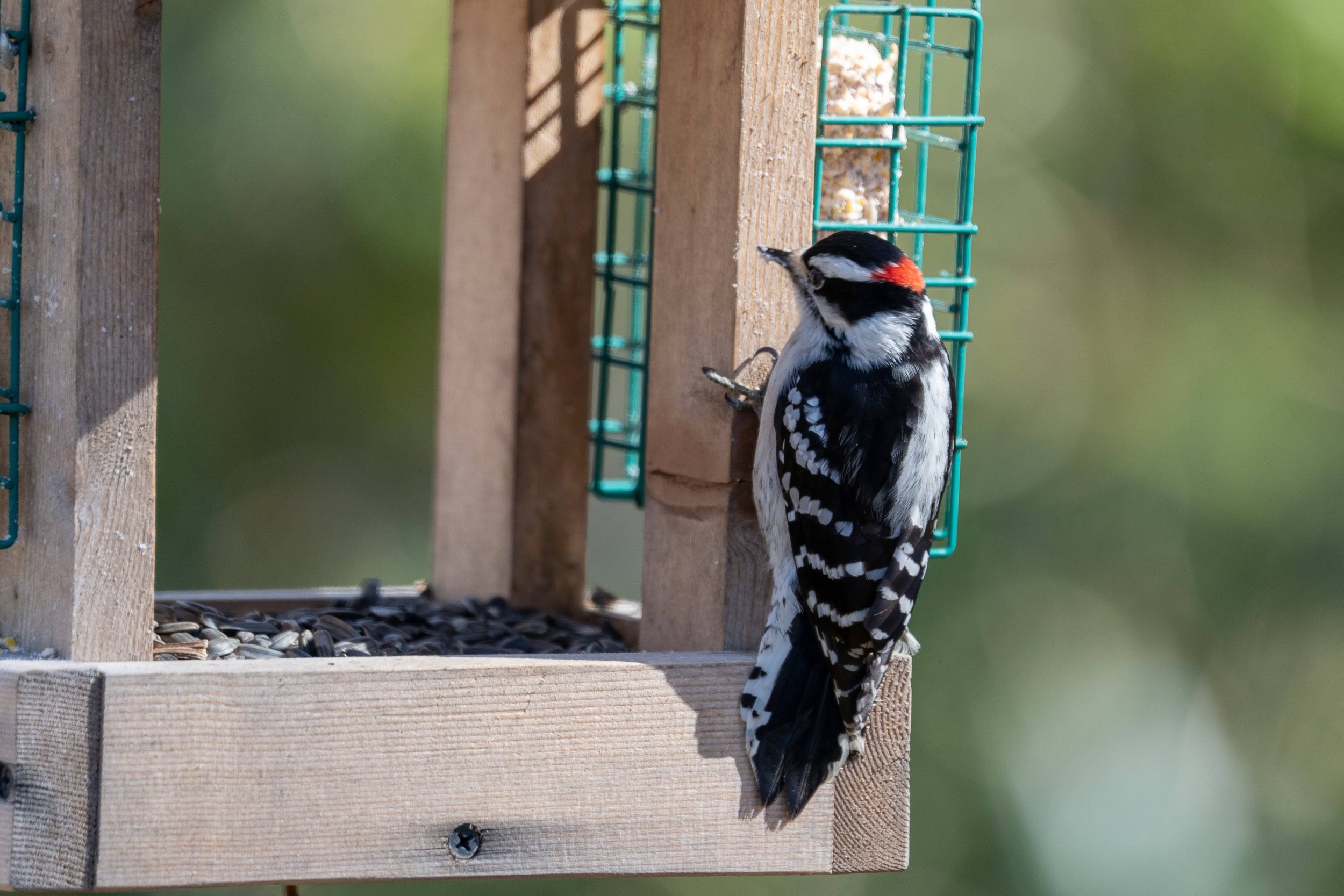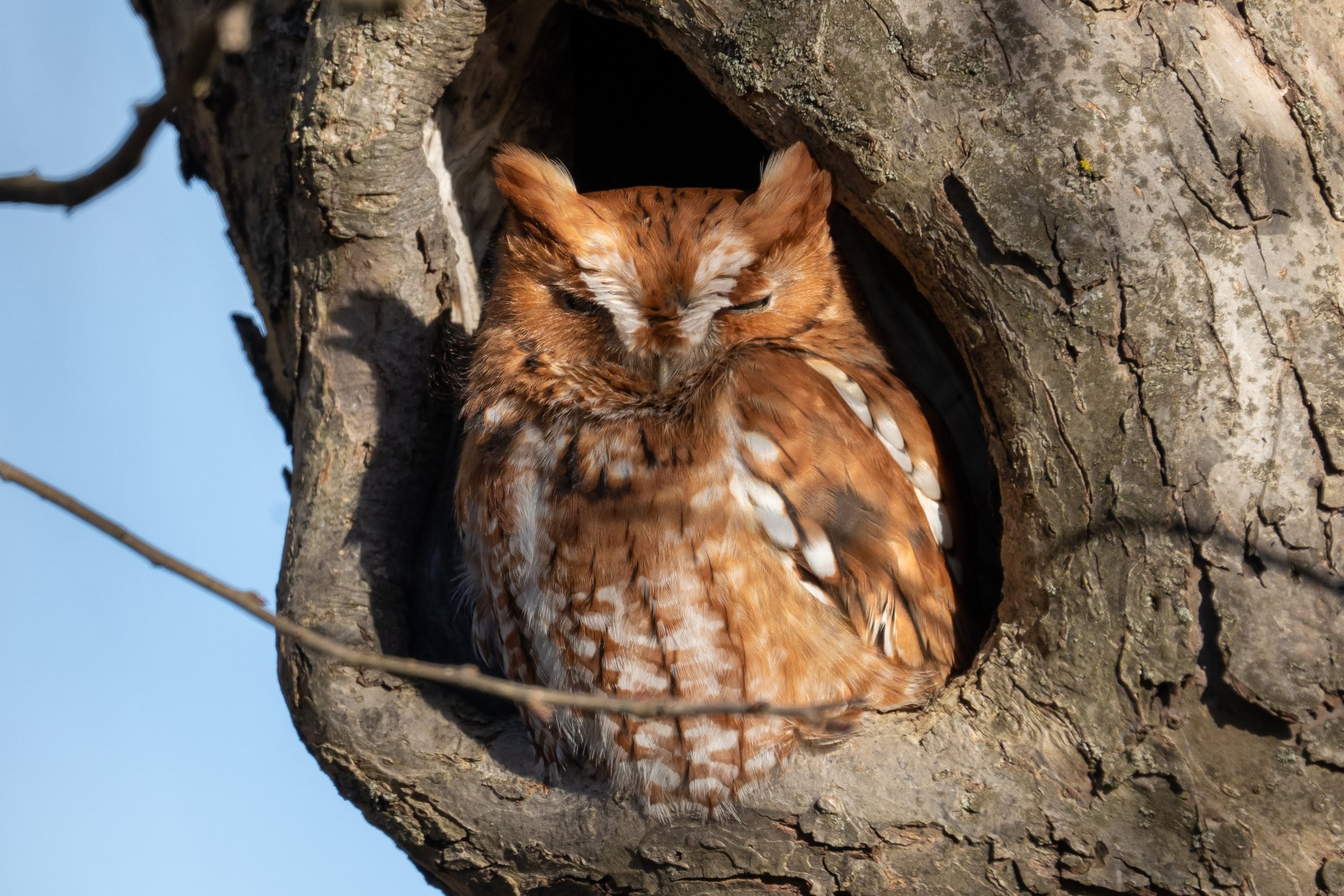

Little Winter Soldiers: Black-Capped Chickadees
These cute little birds are a lot tougher than they look! Black-capped chickadees have a few adaptations up their wings that help them survive Virginia winters.

Native Woodpeckers of the Blue Ridge Mountains
Who’s that knocking on your door? Who else but your friendly, neighborhood native woodpeckers! Here in the Blue Ridge Mountains, we’re lucky to have six native woodpecker species. And while they may all have their own unique features, they do share some common characteristics. Have you seen them all?

Hootin' in the Holler: Owls of the Blue Ridge
In the Blue Ridge mountains, one silent assassin reigns above all as the king of the night. Can you guess whoooooo?
The owl, of course! Old folklore associations marked owls as creatures of witchcraft and omen, and kinder modern stories characterize them as having great wisdom.
Either way, the impression they’ve left observant humans with for centuries is one of great cunning. Fitting, as owls are some of the most skilled predators in the Blue Ridge. Keep reading for a primer on our native owls!

Little Drummer Boy: The Ruffed Grouse
Ever been in the woods and heard someone trying to start a car? More likely it was just a male ruffed grouse “drumming” by beating its wings back and forth very quickly.


2019 Species T-shirts Now Available!
Each year, Blue Ridge Discovery Center designs stylish graphic tees featuring a collection of species that are unique to our region.
The 2019 Species Shirt Collection is now available in our Online Shop. Adult and youth options are available. Continue reading for full descriptions!

The Secret Life of Butterflies
With such striking coloration, this meadow fritillary (Boloria bellona) easily stands out against its floral backdrop when feeding and in flight. However, it needs to be a little more inconspicuous at times of rest.
